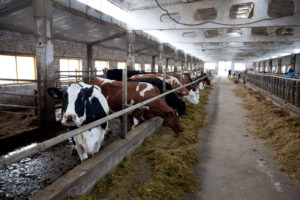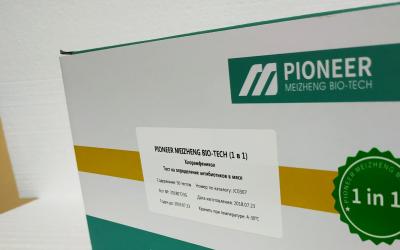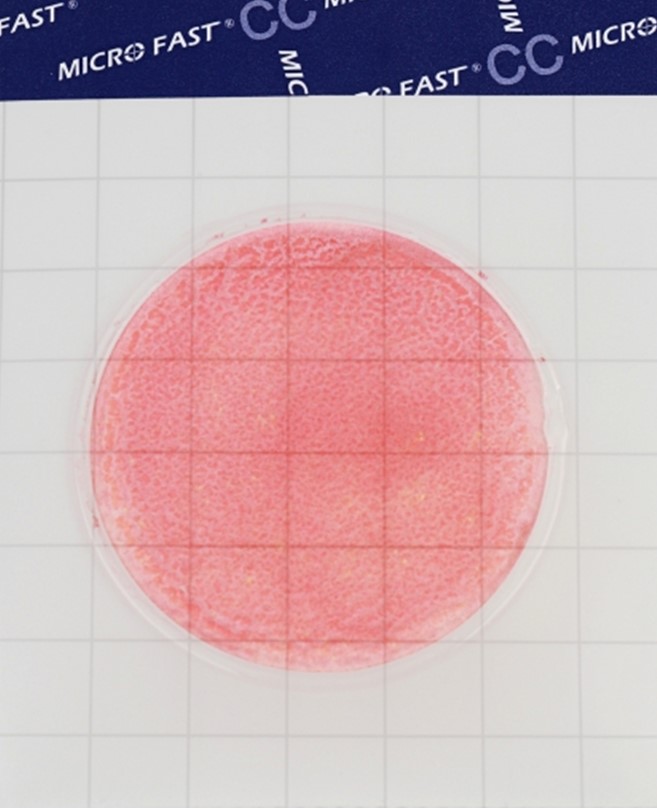Food technologies of the future: what trends will affect the agro-industrial complex
Modern solutions and new challenges
Yusufov drew attention to the fact that along with the development of technologies in agriculture, new challenges also come to the industry. For example, thanks to genomic selection, the production of various agricultural products becomes more efficient, cheaper, and more profitable. Farm animals are now becoming part of the world of the Internet of things, and this is no longer unusual. Cows and pigs are consumers of devices — while people wear APPLE Watches, animals also wear devices through which employees of enterprises can monitor their condition and collect data about each.
But the question is whether our enterprises are ready for such technologies. “According to forecasts, research in this area will provide from 2 to 40 exabytes of data over the next decade. All these data must be stored and processed. And I have big doubts about how much the current infrastructure is enough for this,” Yusufov said, adding that even far from the entire territory of the country there is a cellular connection, there is the Internet.
The processes of feeding, cleaning, transportation around the facilities of enterprises, slaughter, cutting, manufacturing of final products are carried out by a number of companies with the help of robots. “Sensors at different stages of an animal's life cycle provide information that informs effective nutritional and disease prevention decisions. Robotization of cutting involves the use of computer vision to automate the process, increase efficiency, and safety,” Yusufov said. Robots, of course, reduce the burden on workers, but at the same time, a problem arises: what will happen to people if they are replaced by robots? “On the one hand, there will be no need for people who butcher the carcass with their hands, but there will be a need for specialists who can ensure the functioning of such robots,” he noted.
Blockchain technologies make it possible to create a single information field for a large number of different participants: a manufacturing plant, a logistics company, a trading link. In this case, Yusufov believes, it becomes clear at what stage which of the participants in the chain is responsible for the quality and safety of products. “At the same time, for the end consumer, this is an opportunity to trace the entire chain of a particular steak or a particular yogurt on the shelf,” he added.
By the way, retail has changed a lot over the past few years. “During the covid pandemic, we stopped going to the shops. Shops began to come to us, the segment of courier delivery, dark-kitchens, developed. The new reality forced out those who could not transform from the market,” Yusufov recalled.
However, he stressed, since all the technologies mentioned involve the use of IT solutions to one degree or another, the question of the cost of eliminating software failures inevitably arises. “We are getting addicted to numbers. Will the farm be the target of cyber attacks? Shouldn't she be more protective of hackers than when she didn't have digital technology?" he pointed out.
Portrait of the consumer of the present and the future
To the question of what kind of food people want to buy today, what they pay attention to, there is no unequivocal answer, according to Yusufov. “Buyers are very different. In Europe, consumers are more concerned about the price and taste of MEAT. In CHINA, first of all, the question of the usefulness and safety of the product arises, perhaps this is due to covid, because of which China is very scared, and any safety issues there are paramount,” he gave an example.
Therefore, the development of food production in the future can be very multidirectional, and for each direction there is a consumer. So, now meat substitutes are gaining popularity. Their cost is on average $6.5 per kilogram more expensive than the price of meat of animal origin, and this gap, according to Yusufov's forecasts, will increase, although not by much. “There are several reasons for this: expensive and complex production, poorly developed infrastructure, low demand,” he explained. “At the same time, meat substitutes are very often presented as an opportunity to defeat hunger on the planet, but if alternative meat is more expensive, then how can it defeat hunger?”
In 2021, the meat substitute market was valued at $7 billion, representing 1% of the total meat market. And although it shows stable growth, the segment of artificial meat will not pull over a significant share of consumers of meat of animal origin. “How much the artificial meat market should be looked at from the point of view of the threat to the animal meat industry is unknown. But mastering this niche is a good way to diversify the business of building an ecosystem,” says Yusufov.
Another trend is the use of insects as a source of protein. “In some countries, people already consume insects as food, they have no problem eating it alone or as part of a hamburger. For other countries, the culture of eating insects is incomprehensible, and when such products enter the market in these states, it must be promoted, ”says Yusufov.
In addition, according to him, the world has come close to the fact that the neural interface will allow you to influence the taste buds of people. “Can we come to a world in which everyone consumes the same protein substance? It is healthy and neutral in taste. But some special technology irritates our receptors, and we, eating it, feel the taste of steak, oyster or king crab,” Yusufov admitted. With the advent of such cases, he believes, society can be divided into two parts: transhumanists, who will introduce new technologies that save the lives of animals as much as possible into their lives, and techno-Old Believers, for whom the issue of the physical presence of a steak on the table will be important.
Ideas for business diversification
Yusufov recalled that vertical farming is actively developing today. “This is saving space, independence from seasonality, improving the urban environment,” he listed. In addition, vertical farms can look beautiful and allow owners to reduce the cost of logistics - lettuce can grow right in the house or apartment complex. On the other hand, their creation is expensive and technically complex, requiring a lot of energy consumption. “There will be growth in this segment, but even taking it into account, it will remain microscopic, less than 0.8% of the total agricultural market,” Yusufov estimates. To get additional profit from such a business, you can sell the technology of its construction. But, of course, not to a competitor, but, for example, to an architectural bureau or a developer.
Another way to generate additional income, according to Yusufov, is smart beekeeping. “If you have a field in your assets where various agricultural crops are grown, why not put a smart beehive on this field and thus get an additional product per hectare,” he suggested. On the other hand, beekeeping is also an extremely interesting social story: bees are useful insects, while they sometimes die due to poisoning with agrochemicals, and their breeding can become part of the right social agenda.
Another trend of the future is waste-free production. “Last year we adopted a dog from a shelter. I hadn't seen farm animal tails or hooves sold as dog supplies before, but now I know. And when I calculated the margin of this business, it turned out to be extremely attractive,” Yusufov said.
At the end of his speech, he noted that it is important to catch the emergence of a new business model at the right moment. “It's always difficult for pioneers because they have to invest a lot of money in marketing. On the other hand, since they are the first on the market, if they succeed, they secure a monopoly or the lion's share of a niche,” he is sure.
Read together with it:
- Эксперт прогнозирует резкое увеличение цен на куриное мясо до 50% к Новому годуПо его данным, это связано с удорожанием кормов и увеличением финансовой нагрузки на птицеводческие предприятия. Также он отметил влияние высоких тарифов на электроэнергию и логистику, а также возможные изменения налоговой политики, включая повышение НДС до 22%. Панченко добавил, что традиционно к Новому году наблюдается подорожание продуктов, но после праздников цены обычно корректируются..........
- Саратовская область ожидает снижения цен на куриное мясоОднако производство куриного мяса покрывает лишь 16% спроса. Для увеличения объёмов производства предусмотрены льготные кредиты на возведение птицефабрик и модернизацию существующих. Тем не менее, стоимость курятины продолжает расти. В сентябре средняя оптовая цена бройлера достигала 190 рублей за килограмм, тогда как в Саратовской области цена составила 218 рублей за килограмм. Эксперты объясняют...
- ФАО: мировые цены на продовольствие снижаются второй месяц подрядДжим Вайкофф Среднее значение Индекса цен на продовольствие ФАО в октябре составило 126,4 пункта, снизившись с пересмотренного значения в 128,5 пункта в сентябре, что представляет собой небольшое снижение в годовом исчислении и на 21,1% ниже пикового значения в марте 2022 года. Лидером снижения стал сахар: его субиндекс упал на 5,3% до самого низкого уровня с декабря 2......
- Analysts reported a drop in Russian oil shipments to India.In November, Russian oil shipments to India fell by 66% compared to the previous month due to "logistics tactics" that importers resorted to in anticipation of sanctions, ET reports. Moscow considers the measures illegal.Russian oil shipments to India fell 66% from November 1 to 17 compared to the same period the previous month, according to The Economic Times (ET), citing a report from analytics ...
- Bloomberg узнал, как санкции снизили закупки Китаем российской нефтиПо оценке Rystad Energy AS, китайский импорт российской нефти морем может сократиться на 500–800 тыс. баррелей в день, что составляет две трети обычного уровня Общий объем импорта российской нефти в Китай снизился на две трети из-за санкций США, сообщает BLOOMBERG. По его данным, крупные государственные нефтеперерабатывающие компании приостановили закупки нефти марки ESPO, которая составляет основ...
- Новый проект по производству говядины в Озёрске: Калининградская область делает шаг к развитию местного животноводстваСогласно информации от губернатора Калининградской области Алексея Беспрозванных, запуск проекта уже состоялся. В Озёрск были привезены первые 45 коров галловейской породы, славящейся высоким качеством мяса. В дальнейшем планируется увеличить количество животных до 250, что позволит не только обеспечить местный рынок, но и создать возможности для экспортных поставок. Разведение галловейских коров ...
- Ученые Беларуси разработали новый ветеринарный препарат для лечения заболеваний крупного рогатого скотаНовый препарат, названный «Антипестивир-ВД», стал первым противовирусным средством на рынке, эффективным против болезней слизистых у коров, включая скрытые формы инфекции. В состав препарата входят компоненты, произведенные из местного сырья, которые активируют иммунный ответ животного. На этапе клинических испытаний препарат продемонстрировал высокую эффективность: 63,3% животных выздоровели в те...
- Experts predict further increases in chicken and egg prices in Russia.Key factors driving price increases: Increasing VAT from 20% to 22% Increased feed costs due to crop failure in the regions Rising prices for fuel and energy resources Seasonal increase in the cost of keeping poultry in winter Expert forecasts: Financial analyst Tatyana Volkova expects chicken prices to rise 1......






























































